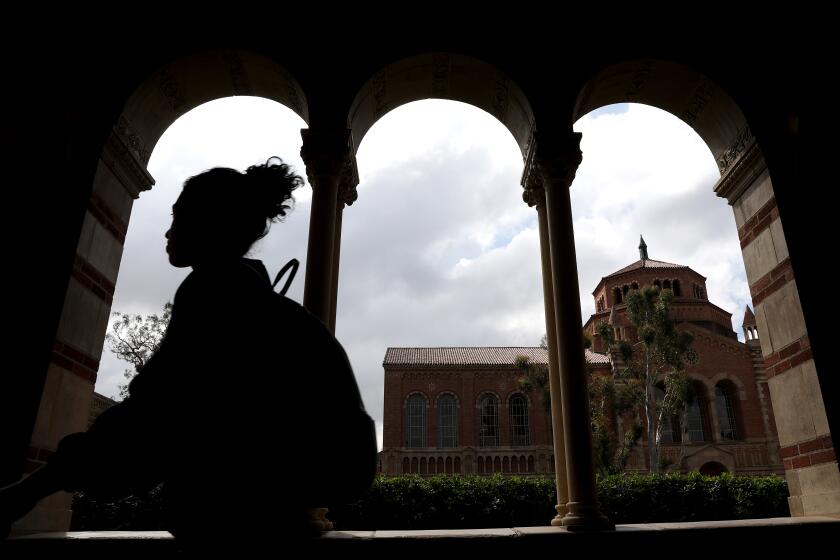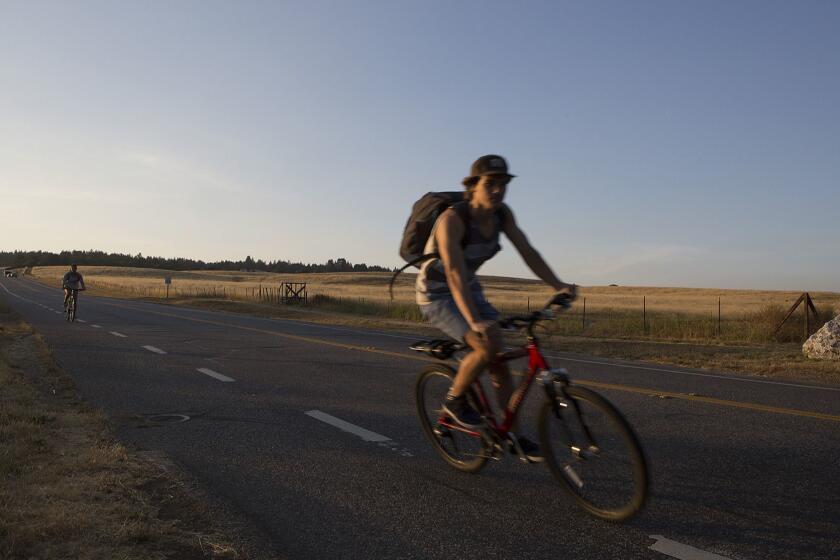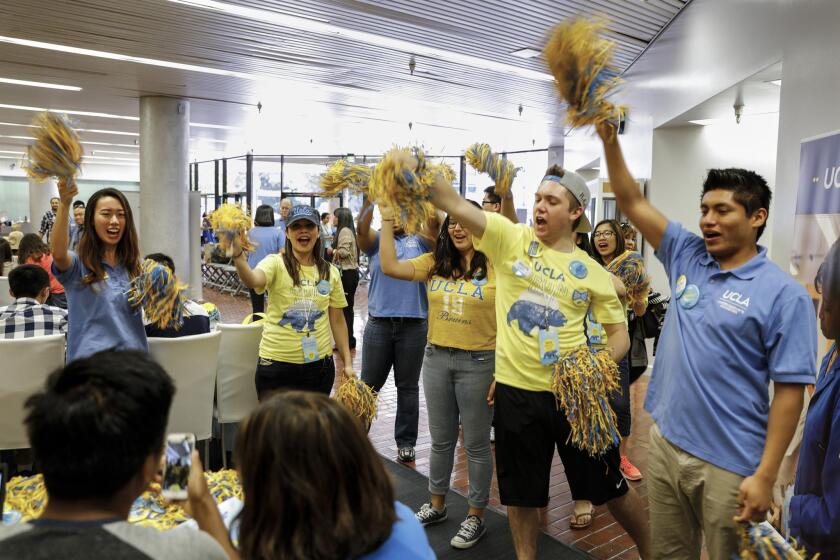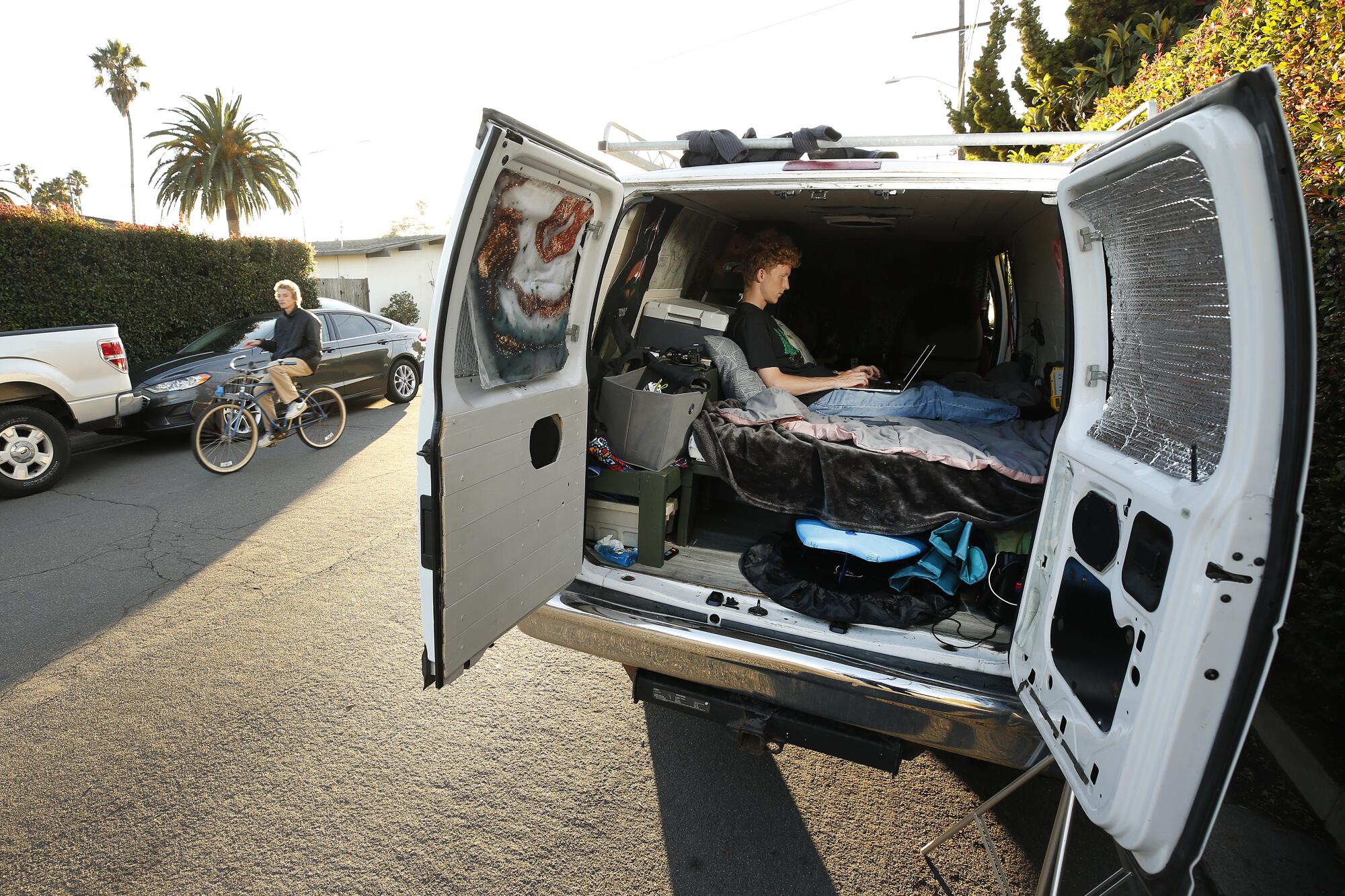
After months of pandemic isolation, Kris Hotchkiss expected a celebratory return to campus for his senior year at UC Santa Barbara. Instead, he and hundreds of fellow students have found themselves hammered by another crisis: a major housing crunch.
Hotchkiss had to endure a leaking roof, soggy bedding and power failure that shut down the ceiling fan, refrigerator and lights for six weeks. He has no shower or toilet. That’s because he lives in a van — the only affordable shelter he could find.
“I was upset, stressed, hopeless that I couldn’t find any affordable housing,” said Hotchkiss, a communication major from Camarillo. “It sometimes sucks” to live in a van, he said, “but there was no other choice.”
Recent news about UC Santa Barbara’s plans to build a 4,500-bed mega-dorm with tiny rooms and few windows — derisively dubbed “Dormzilla” — sparked outrage and national headlines. But the more urgent problem is a campus affordable housing crisis hitting thousands of students across California’s three public university systems — leaving some unsheltered, others with mounting debt burdens and many filled with anxiety and stress.
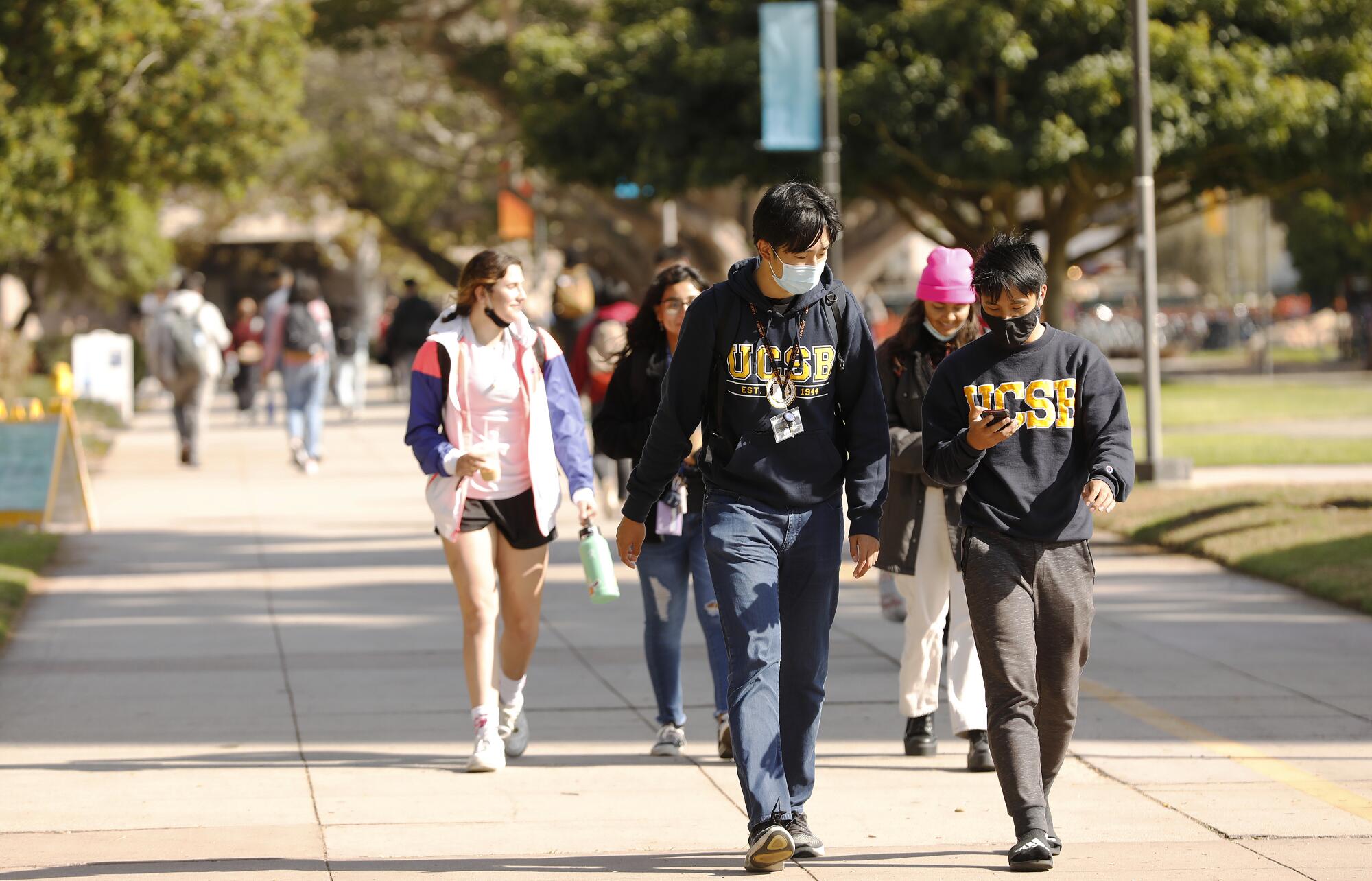
More than 16,000 students at the University of California and California State University were on waitlists for housing this fall, despite construction of 36,000 beds by both systems since 2015, according to a new report by the state Legislative Analyst’s Office. UC Berkeley alone turned away more than 5,500 housing requests this fall, and 40% of undergraduates are unable to live in the city due to scarce supply and high rents, the campus reports.
For the California Community Colleges system, only 12 of 116 campuses have housing programs, which shelter 2,400 students, an Assembly subcommittee memo said. The campuses traditionally weren’t meant to offer residential life for commuter students. But the need is so high, with 20% of community college students reporting homelessness, that 81 colleges have submitted applications for new state housing grants to plan or construct dorm projects.

Desperate to address the hardship, Long Beach City College rolled out a pilot program this month to allow 15 students living in cars to park overnight in a campus parking structure. So far, two students are sleeping in their cars on campus and nine more have applied. The idea has been rejected elsewhere, including at UC Santa Cruz, where then-Chancellor George Blumenthal said the campus had better alternatives than what he feared would create a “huge headache” with the need for security and 24/7 access to campus toilets and showers.
The growing housing stresses are rooted in a confluence of factors. Under political pressure to boost enrollment, UC added 27,583 undergraduates — but about 22,000 beds — since 2015. Community protests, environmental concerns and litigation have slowed down or halted at least six UC housing projects in the last three years.
The $1.5-billion project would house more than 4,500 students, but 94% of the rooms would have no windows.
The pandemic has also played a role. UC San Diego, for instance, eliminated triple-occupancy rooms this fall due to COVID-19 restrictions; the net loss in housing capacity caused the campus to eliminate its two-year housing guarantee until fall 2023, the Triton student newspaper reported. Campuses had to set aside dorm rooms to quarantine those who are infected with the virus or who had been closely exposed to it. UC Berkeley, for example, took out 130 rooms.
Similar concerns also affected the housing market in Santa Barbara. More students are opting for fewer roommates to minimize the risk of infection, a choice that has left more of them scrambling for places to live, said Robin Unander, a UC Santa Barbara student legal services advisor. She added that an influx of people moving to scenic Santa Barbara while working remotely has squeezed the rental market even more. And more students seem to have delayed lining up fall housing, she said, in part because of uncertainty over whether the campus would return to in-person instruction as it announced in February.
“There were just so many different things that culminated in a perfect storm,” Unander said. “I’ve been working with the university legal center for 18 years and I’ve never seen a housing crisis like this one.”
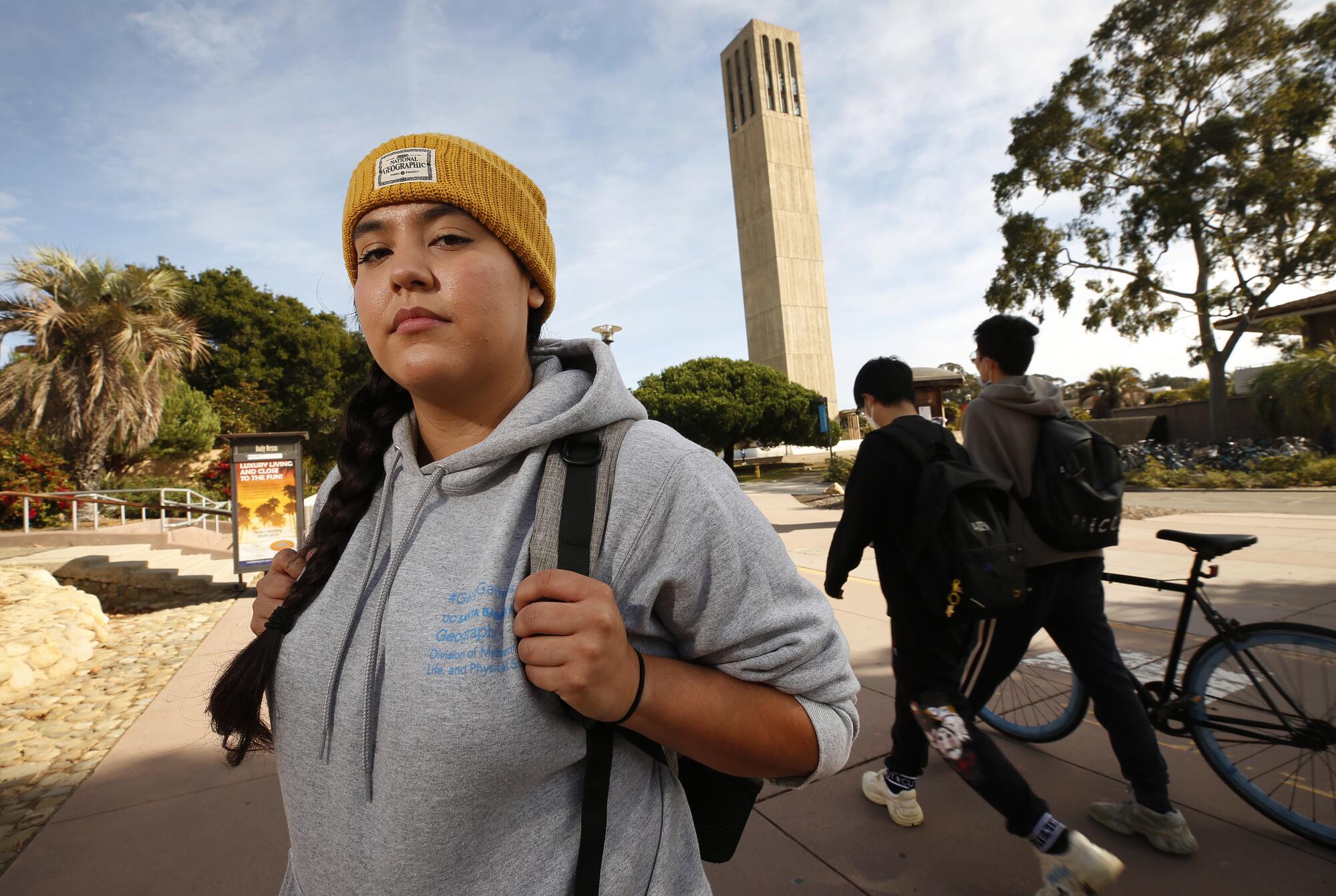
Another hardship, Unander said, was widespread housing scams aimed at desperate students. One student she counseled had to withdraw from school after losing $2,000 to a fraudster — all the money he had for a deposit and first month‘s rent.
Subscribers get early access to this story
We’re offering L.A. Times subscribers first access to our best journalism. Thank you for your support.
The scope and urgency of the situation led an Assembly subcommittee to hold an unusual hearing this week to address the student-housing shortage, an issue it does not usually take up as the state has not typically funded campus dorms.
But Assemblyman Kevin McCarty, D-Sacramento, said increasing student housing was key to legislative goals to boost UC enrollment of qualified California students — tens of thousands of whom were rejected by their campuses of choice this year. That concern prompted him to help secure the state’s first substantial contribution to student-housing projects this year, amounting to $2 billion through 2023-24, for the UC, Cal State and community college systems.
Selectivity grew at UCLA, where the admission rate dropped to 10.7% this year from 14.4%.
“We have a housing crisis in California. We have a student affordability issue. And there’s a legislative push to dramatically expand enrollment for California students,” McCarty said in an interview. “So we think it’s smart for us to get in the business of helping build more student housing.”
About half the Cal State system’s 23 campuses have increased student housing — about 14,000 beds in the last five years — with another 23 projects to add 13,300 more beds under construction or being planned, the Legislative Analyst’s Office reported. Availability varies widely, with Cal Poly San Luis Obispo housing 36% of students and Cal State Bakersfield just 3%. System leaders say they want to expand housing in part because research shows that students who live on campus have higher grades and graduation rates than those who don’t.
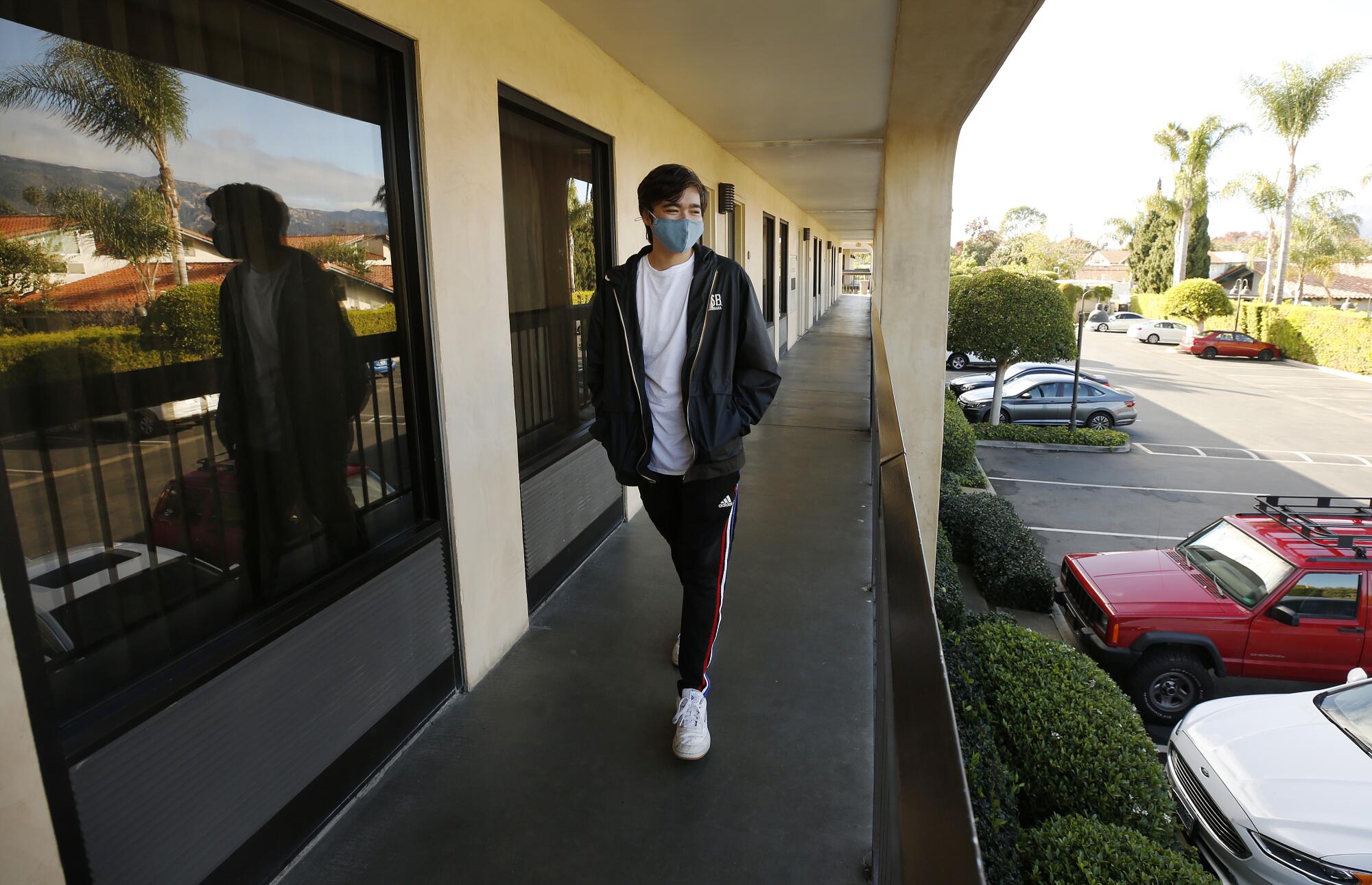
A top item on the UC wish list is a zero-interest state revolving fund so campuses can reap huge savings in debt service for housing construction projects. UC San Diego Chancellor Pradeep Khosla, for instance, told Assembly members that such a fund could generate a savings of $2.1 million for every $100 million borrowed, which could provide 1,000 needy California students more financial aid and lower housing costs to as much as 38% below market rate.
McCarty said he planned to redouble efforts to create such a fund next year — possibly as large as $5 billion.
UC Chief Financial Officer Nathan Brostrom told legislators this week that another major challenge is litigation against UC housing projects based on state environmental laws. While UC supports the laws, officials say reform is needed as lawsuits have slowed or halted some of its projects.
Targets include a UC Berkeley project for more than 1,000 students beds and about 100 units of affordable community housing at the historic People’s Park and a UC Santa Cruz plan for 3,000 beds across two sites, including a student-family complex and child-care center. The Santa Cruz family complex was set for completion by now, but due to litigation “we have yet to put a shovel in the ground,” Chancellor Cynthia Larive told Assembly members.
The road to UC Santa Cruz winds past old lime kilns, assorted barns and storage sheds.
But opponents argue that UC has not adequately examined the impact on traffic, for instance, or the natural environment, such as an iconic meadow at Santa Cruz.
At UC Santa Barbara, officials say the mega-dorm project is an “important step” in addressing its housing needs. The campus, in its 2010 long-range development plan, projected it would add 4,800 beds by 2025 but so far has completed just two projects with about 1,500 beds.
Protesters aren’t objecting to a dorm project but have pilloried the controversial design by billionaire Charles Munger, who pledged $200 million for it. The proposed 11-story structure would house some 4,500 students in a warehouse-size building where about 94% of the units do not have windows.
When asked about the Munger project, Brostrom told Assembly members it was still in the early planning stages and would need final approval from regents, among others, before proceeding.
In the meantime, campus officials scrambled to secure housing in hotels for about 350 students for the fall quarter. But they have not agreed to extend the contracts after they expire next month. That stance, along with outrage over the Munger design, prompted a demonstration last week by more than 100 students, faculty and staff demanding more support from campus leaders.
A space crunch is projected to intensify in coming years just as the need for highly skilled workers in California grows.
“If the school doesn’t figure out a way to house our students, it will be nothing less than a direct attack on them,” said Isabel Bahamonde-Partlan, a junior who helped organize the rally after a “dehumanizing” experience couch surfing for weeks this fall before finding housing a 40-minute bus ride away. “Students need to know their university will support them in a crisis like this.”
UC Santa Barbara is still “considering options” for students who need housing for the winter quarter, said campus spokeswoman Andrea Estrada. She said the campus offered housing to all who applied by the July deadline but was deluged with “several hundred” last-minute requests in August and September, all of them accommodated with hotel rooms, dorms or other spaces. She expects more rooms to open up next quarter as some students graduate or leave for study abroad programs. Some of the students in hotels already have moved to campus rooms or other permanent accommodations, she said.
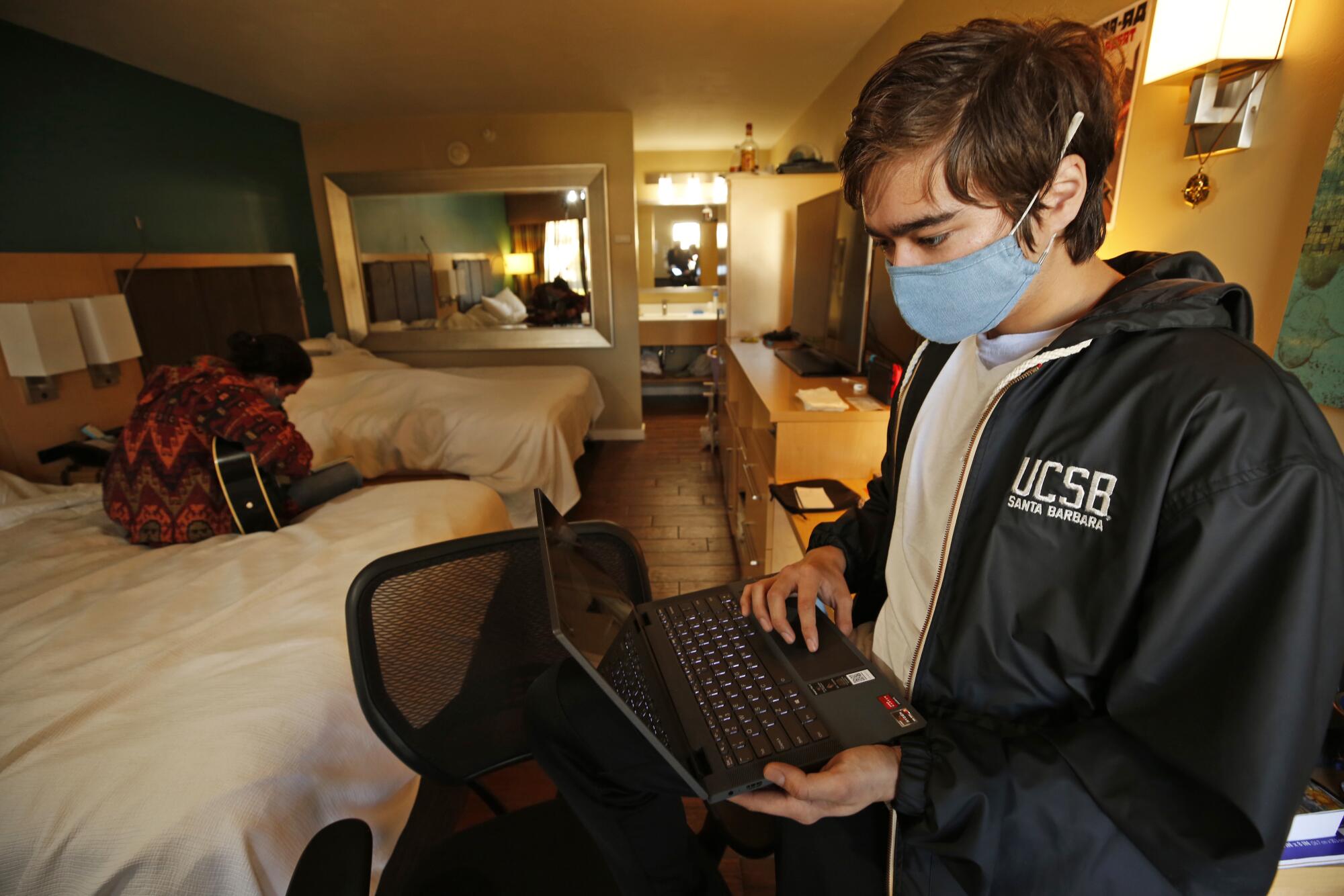
Zac McGlynn and Luke Hamilton, both seniors, are still in a hotel. Their room at the Best Western South Coast Inn in Goleta outside Santa Barbara has two comfortable queen beds but is so small they are literally living out of their suitcases seven weeks into the quarter. There is just one small desk area, which prevents them from studying there at the same time. Worse, they said, is the lack of a kitchen. They tried once to cook on a hot plate but scraps of sausage and rice clogged the bathroom drain during cleanup. So now, McGlynn says, they’re living on “protein bars and fast food” and wonder about the toll that diet will have on their health.
McGlynn was late to the housing search because his anticipated study abroad program in Singapore this fall was canceled. He said he might reluctantly defer enrolling for winter quarter. Hamilton said he might drop efforts to finish a second major and leave school with a degree in psychology.
Madeline Castro expected a full college social life but instead is dejected in her hotel single room away from campus. She’s so stressed about finding housing when her hotel contract ends next month she can’t sleep well, grinds her teeth and, at age 22, has grown white hairs. Faced with unpaid housing bills, she has started a GoFundMe.
“I pictured my senior year as me trying my hardest in classes, but the anxiety over housing is a heavy burden,” Castro said. “I seriously just want to drop out.”
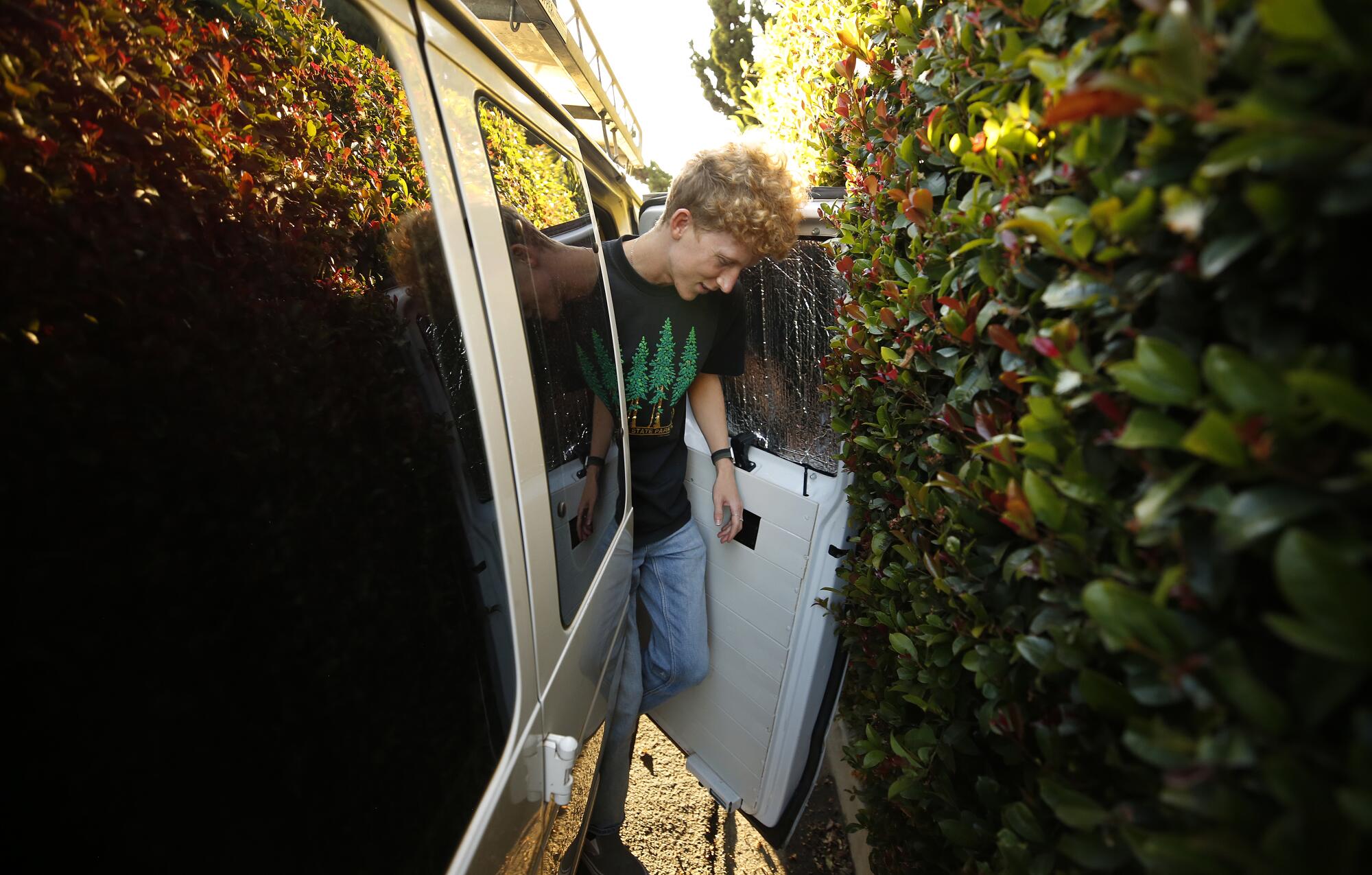
Hotchkiss has let go of his initial frustration and adapted to van life, saying the experience has taught him lifelong lessons in resilience, even-mindedness and “learning to be comfortable with being uncomfortable.” He has lined up housing for next quarter.
Until then, however, he continues to face challenges — such as a threatening flier left on his van this week.
“People camping in neighborhoods without toilets or trash removal inevitably damage the environment,” the unsigned letter said. “Stop destroying this place before you suffer the legal consequences of camping here.”
More to Read
Sign up for Essential California
The most important California stories and recommendations in your inbox every morning.
You may occasionally receive promotional content from the Los Angeles Times.

